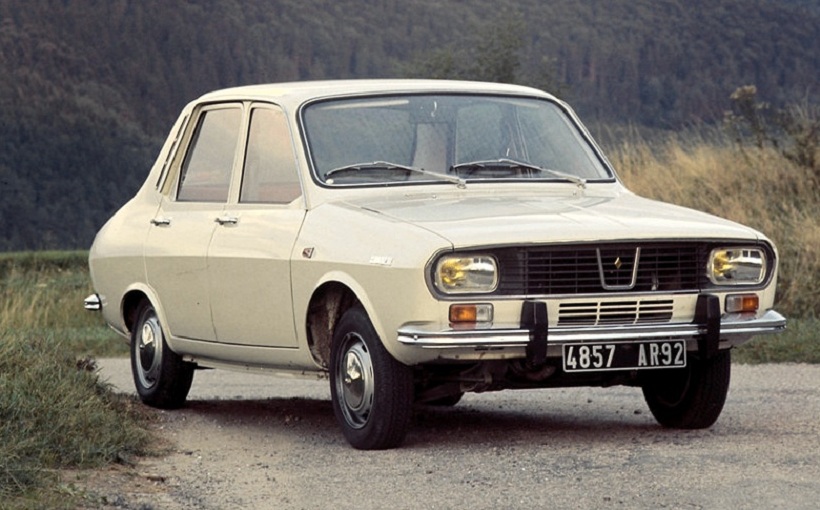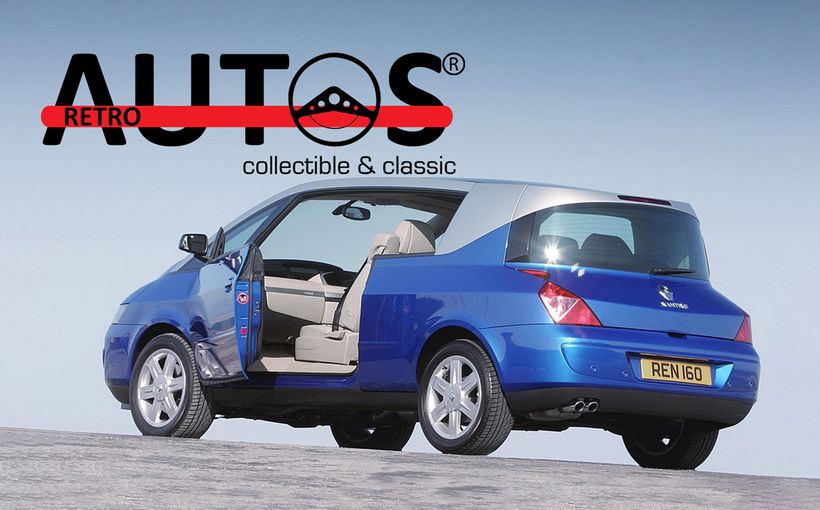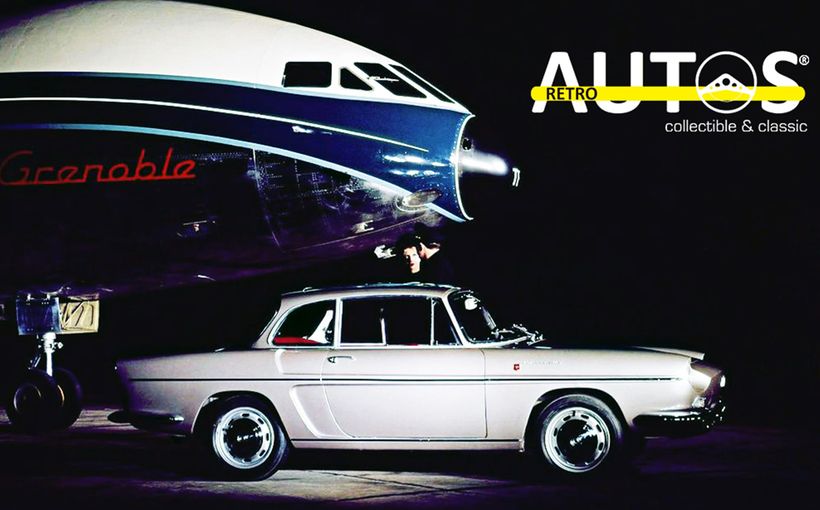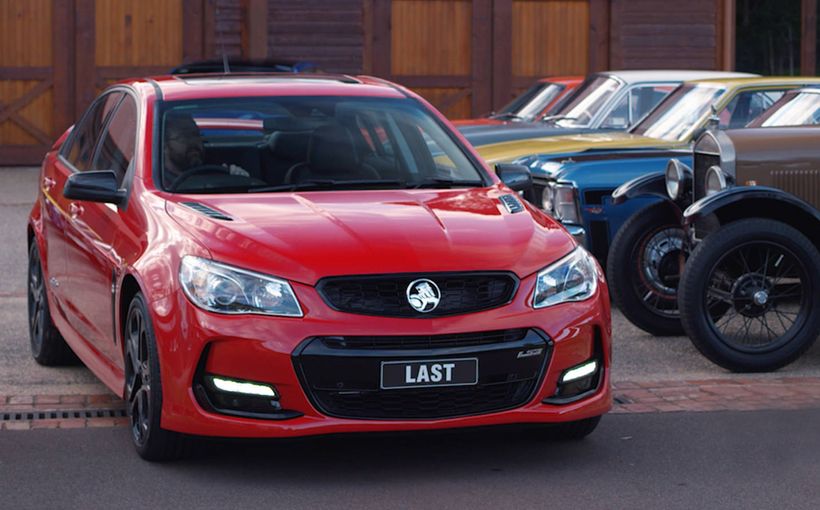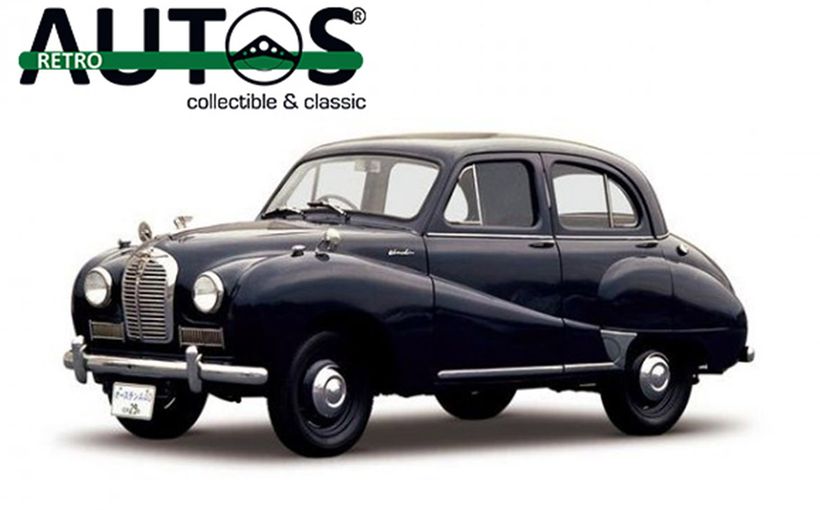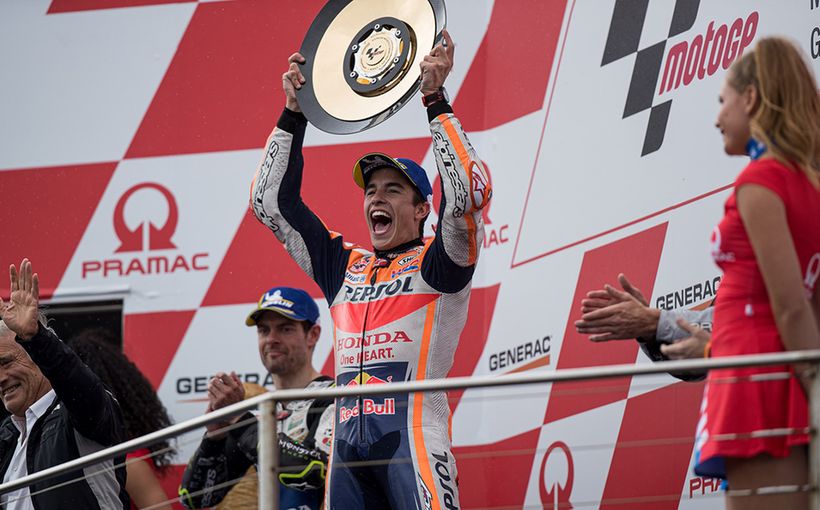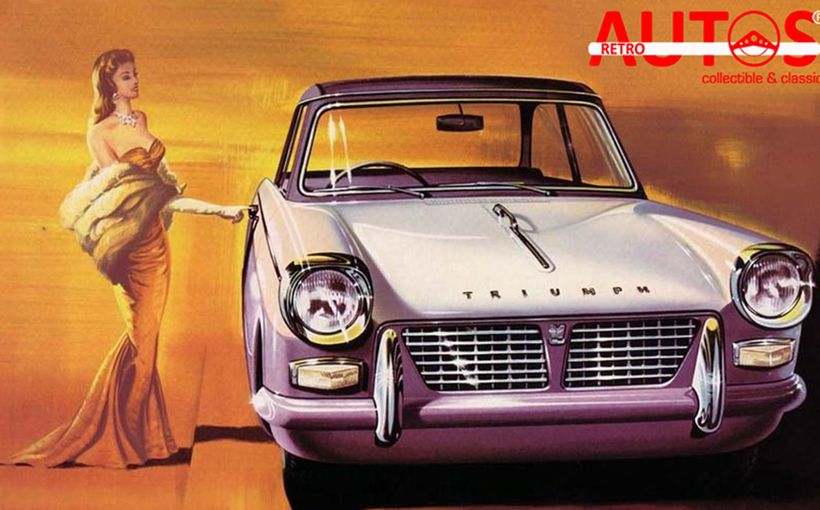1970-80 Renault 12: Australian Ambitions Nuked

The late 1970 arrival of the Renault 12 in Australia was accompanied by universal accolades, a Wheels Car of the Year award and confident predictions of annual local sales of 5,000 plus. After initial sales doubled that projection, Renault’s loyal alternative owner base became wary of buying Renaults during 1972. They didn’t buy assurances that French atomic bomb testing in the Pacific was clean and harmless. The Renault 12 left the local market 10 years later with an overall tally of just 26,000.
After 1972, Australia and New Zealand were mired in protests and bans on French goods. Even if Renault 12 parts reached Australia, there was widespread fear, backed by reality, that a Renault or Peugeot owner could be stranded without vital parts and the cars left worthless. These were the years that French Chrysler 180 parts were left to rot on Aussie docks delaying the local Centura.
Just as Renault 12 sales recovered to almost match the peaks of the Renault 12’s first year, testing resumed again. By 1985, the French had bombed the Rainbow Warrior in New Zealand killing a crew member.
As the state-owned French car company, Renault took a bigger hit during this period than family-owned Peugeot. Renault was seen by many as a product of an entity engaging in state-backed terrorism. This at least partly explains why Renault to this day struggles to win back a local buyer base that was as entrenched as Holden by 1970, within certain demographics. Within those demographics were Australians most likely to regard the French government’s behavior as hostile.
It hasn’t helped that recent events have confirmed that their concerns about the bomb tests were correct. It has now emerged that the French knew they were showering residents and tourists in Tahiti and surrounding islands with 500 times the maximum accepted levels of radiation while saying otherwise. Expert assessments at the time that suggested the atoll test site could break-up and discharge its deadly contents into the waters off the Australian and New Zealand coastlines are looking increasingly accurate.

The Renault 12 deserved better than this and so did its early buyers who invested in its unique approach. Renault had good reason to expect a bright local future well beyond its 1980 closure, an outcome that had already been delayed by Ford’s shifting of Cortina wagon assembly to the local Renault plant in 1977.
The Renault 12 was more than just a front drive game-changer. It provided the bridge between the Mini and Morris 1100 with their urban emphasis and the widespread swing to front drive across the board over the following decade.

The Renault 12 demonstrated that a small 1.3-litre front drive model could not only take on the worst of Australian roads and climate extremes, it could also provide outstanding cabin comfort and refinement for at least four adults over long distances. It was also the first to demonstrate that a front drive car could be reliable and no more difficult to repair than a rear drive model.
For many Australians, it was closer to a smaller Austin 1800 alternative in application than the Morris 1300/1500 which was its direct competitor.
If it wasn’t for the bomb tests, the Renault 12 was in a box seat to show that 1.3-litres were enough to meet the needs of most Australians during the fuel crises that followed not long after its local launch.
By 1974, it was facing keen new local competition with bigger 1.8-2.0-litre engines. As the handicap of its French nuclear testing connection faded for a short period, the Renault 12’s economy and general refinement were still more than adequate to counter this threat.
What made the Renault 12 so special?

European Chic without the Price and Complexity
The Renault 12 marked Renault’s third drivetrain layout in a decade. As well as upgrading its traditional rear engine platform with the R8/10 in the early 1960s, the company replaced its entry level rear-engined 750 model with the front drive R4 five-door wagon. This amazingly versatile wagon had its engine placed behind the transmission Citroen-style hence its dash-mounted gear lever that had to reach over the engine to select a gear!
The milestone mid-1960s R16 continued with this layout. The initial plan for the Renault 12 was for it to be a cut-price front drive model combining the style of the R16 with the running costs of the R10 and the flexibility of the R4. At one stage, Renault looked at placing the spare wheel on the boot lid to maximize space.

Although never acknowledged, there was a clear point when the Renault 12 moved away from the intended Renault 16 family look (and the R6 which arrived 12 months earlier with an R4/R16 family resemblance) with its own three box style unrelated to other Renaults. It appeared to shadow Saab’s milestone new 99 series first seen several years before the 12’s late 1969 French release. The resemblance including the grille detail was uncanny.
The Renault 12 wasn’t the only car in Australia sharing strong Saab 99 cues. The third generation Toyota Corolla arrived late in 1974 with strong Saab overtones around the rear quarters, verifying that the four year old Renault 12 was indeed a trail blazer in the small car category. Because the Saab 99 proved such an evergreen design as later 99 EMS and Turbo versions became aspirational choices, the Renault 12 basked in the reflected glow for many years.

Following the Saab 99’s release, the Renault 12 was the first mass-market front drive model that didn’t require its buyers to stand out as being too different. Although it was unmistakably French, the Renault 12 was indistinguishable from a rear drive model. Its overall profile and curved sides were not far removed from an LC Torana of the same year, something that could not be said about an Austin 1800 or Renault 16 compared to a current full-size Holden.
Along with the later Audi Fox/VW Passat and various Fiat 128 Coupes, the Renault 12 played a big role in making front drive mainstream in the lower medium-car price range, not just the preserve of a niche or mini-car market. With the help of the VW Golf that followed six years later, the Renault 12 applied the blow torch to Japanese rivals to improve their mediocre dynamics and safety levels. The influence of these Europeans was soon seen in the next generation Japanese models.

Yet the packaging would not have been so readily embraced if it wasn’t for the model’s sound engineering that was trouble-free from the start. This was another first for a front drive model in this price range.
The key to the Renault 12’s proven front drive engineering was ironically Renault’s current rear drive, rear-engined model. The R8’s tough and light Sierra engine had steadily been developed and proven under the rigours of Gordini competition from a sub-1.0-litre R8 engine to 1108cc then 1255cc in the later R8 Gordini. Both opened the door for an efficient 1289cc production version capped by a new eight-port cylinder head with inclined valves (as for the local Chrysler Hemi 6) that replaced the Gordini’s full hemi-head.
This five-bearing 1.3-litre engine was coupled to a variation of the transmission used in the more powerful Renault 16 and left plenty in reserve. It was as if Renault wheeled an improved R8 drivetrain around to the front of the new Renault 12 in a mirror image of the R8 layout. This, as a matter of course, placed the engine and clutch ahead of the front axle line with only the gearbox internals behind it.

Although the Renault 12 was the only model in the local Renault range with this layout, it wasn’t new. Renault had already applied it to an earlier Estafette van ready to exploit its virtues over other front drive layouts. Advantages included a tight turning circle, longer drive shafts for extra suspension travel and a single-rail floor shift no more complicated than a rear drive model. Subaru, Auto-Union DKW/Audi and the NSU Ro80 were also committed to this layout. The AlfaSud would soon be added to the list.
As with Porsche, VW and Renault models which had engines hanging behind their rear axles, the Renault 12 layout could only work properly within tight parameters. The Renault 12 weighed 865kg and 58 per cent or 500kg of that was over the front wheels. Passengers and a boot load of luggage could soon add 500kg for almost perfect weight distribution.
In other markets, the larger Renault 16 engine hanging over the Renault 12’s front axle had upset the fine balance in steering and handling.

The local car’s unassisted 3.5 turns lock to lock and 10.7 metre turning circle were dependent on the relatively skinny 155X13 high profile tyres and light engine. A high pivot point for the steering with the steering rack mounted behind the axle were amongst several Renault 12 advances that would take years to reach other cars.
Because the Renault 12 still had to cater for the harsh conditions of the most remote French colonies, its suspension had to be as exceptional as any other French family car but under a much tighter budget than bigger Renault and Peugeot models. The Renault 12 does not have front MacPherson struts, an error so often perpetuated that it is now accepted as fact. Ditto for the ongoing assumption that it had a torsion beam rear axle.
The Renault 12 had exceptionally long coil over shock units in all four corners seated in reinforced sections high up in the body for maximum travel. At the front, they worked through upper and lower control arms for the desired double-wishbone geometry and strength. Because the engine is mounted along the car’s centre line, both arms could pivot much closer to the centre of the car than transverse-engined front drive models.
At the rear, the long coil over shock units were attached to a pressed steel hollow beam or dead axle located by two longitudinal tie-rods which acted as trailing arms but allowed more deflection to give the rigid axle longer travel. The large central A-bracket that pivoted from two body points above a single pivot on the rear axle was its secret weapon in terms of location. The design delivered an exceptionally deep and uncluttered boot, a double-edged sword as it also generated a wide variation in laden and unladen weight in such a light car.
There were separate anti-roll bars front and rear. As for most French cars, the entire suspension geometry and bushes were tuned for radial tyres now widely available in Australia. In this area alone, the Renault 12 placed the entire local industry again on notice as the R8 had done earlier.

Front brakes were standard discs but the R8/10’s rear discs, which worked much harder in the rear-engined design, were replaced by drums with a load-dependent anti-lock function. Given the shift in weight to the front, it was not a backward step.
As safety concerns mounted over the weight imbalance of cars like the rear-engined R8, Renault took no chances with the Renault 12 when a full boot could change things. Tyre pressures were 21/24psi front to rear but that wasn’t all. To quote Renault at the time: “The secret lies in its self-adjusting rear axle – a hollow, light, warp-free (therefore not a torsion beam) shaft that prevents the vehicle from understeering when unladen and oversteering when laden.”
The Renault 12 was no slouch, its 18.9 second standing 400m and 143km/h top speed were a product of Renault’s attention to detail including pioneering attempts to reduce drag and exploit aerodynamics to stabilize it at speed. More important for Australia in 1970, its tall gearing allowed the 12 to cruise well above today’s speed limits over a wider variety of local road surfaces than other small cars.
There was also greater attention given to active and passive safety than seen in this price range before.
Amongst increasingly mobile Aussie youth who were venturing into Australia’s most remote locations for work and recreation, test reports like this established the Renault 12 as an instant must-have:
“We drove the car virtually flat out for mile after mile on bitumen, both wet and dry. It cornered perfectly, had no body roll whatsoever, and gave a tremendous feeling of stability. On dirt and gravel surfaces this feeling was even more apparent.
“By common sense application of power, the car can be brought into either oversteer or understeer characteristics to suit the occasion and it would take an extremely hard wheeler in a rear wheel drive car to keep up with an average driver in the 12 over loose surfaced , twisting roads.” (Australian Motor Manual, January 1971)
Cruising at over 80mph/128km/h, the testers achieved an average 32 mpg/8.8L/100km which meant owners could easily achieve 40mpg/7L/100km in every day running.

For the entire local Renault 12 model life, Renault opted not to tamper with this formula, only upgrading the existing drivetrain as needed. This preserved the Renault 12’s reputation more than was understood at the time.
In Europe, the Renault 12 provided the platform and approach for a new range of Renault models. These included the stylish Renault 15 and 17 coupes sold in Australia as exclusive imports. The Renault 18 that ultimately replaced the 12 in Australia was more of the same.
The Renault 12 heritage then continued in the Renault18-based Fuego, another coupe sold in Australia as an import. The Fuego’s heavier 2.0-litre engine hanging over the front highlighted how important tyre adhesion had become for the Renault 12’s rear suspension trickery to counter the Fuego’s big increase in understeer.
Before it left the local market, the Fuego became known for ploughing straight ahead if grip was compromised while cornering, a reputation it shared with the Audi 5+5, another small car with too much engine ahead of the front axle.
Although the Fuego marked the last local appearance of the Renault 12 platform, large Renault models followed the 12 in having their engines moved ahead of the front axle except their extra weight and wheelbase made them less sensitive to the drawbacks.
By 1976, Renault had started to follow the global move to a transverse front drive layout with the Renault 14, a Golf-style hatch and the true replacement for the Renault 12.
Eventually Renault swapped over to this layout across the board, leaving Subaru and Audi to keep the layout shared with the Renault 12 alive by developing short and light new engines. After the Audi-based Passat followed the Golf, even Audi has now resorted to transverse engines in their Renault 12-sized models.

The Renault 12 in Australia
If you are a Renault 12 tragic or potential buyer, go straight to Simon Fitzpatrick’s The Useless File where he covers its local history in exacting detail.
From the first, the Renault 12 TL was an Aussie market special defined by duty concessions under the 50 per cent local content plan that required a 25 per cent difference in engine capacity between models.
The Australian Renault 12 engine was reduced from 1289 to 1251cc by reducing the bore to 71.9mm for a 25 per cent margin under the Renault 16’s 1565cc. It met the cutoff by fewer than two cc!
This smaller engine was regarded as the sweetest after engine tweaks including a freer-flowing exhaust allowed Renault to maintain the original power claims. The process cut the price to just $2398, level with the locally-assembled Datsun 1600 and the Type 3 VW 1600 sedan, both compelling choices in 1970.
Another local 1970 move should have placed the Renault 12 at the top in rust protection but delivered the exact reverse. An expensive new Electrophoresis undercoating system applied to local Renault and Peugeot body shells ate into them instead of protecting them before the system was rectified.
Various explanations have been offered over the years but the most consistent is that certain overseas personnel refused to heed local advice that higher local ambient temperatures required different settings to maintain the desired chemical reaction.
Although the very first Renault 12 deliveries came with the 1289cc domestic engine, all examples had the French territories export package including sump guard, bigger radiator and stronger and better-protected lower suspension arms. As local paint and more luxurious trim reflected what was offered in the R10/16 ranges, the LHD wipers were the main drawback.
By mid-1971, a special articulated wiper arm, similar to the HT Holden’s was fitted as local content increased which now included local Bosch electricals. The ripple-padded steering wheel fitted to early cars was downgraded to the French 12L’s plain round rubber centre pad but the washers were upgraded from hand-pump to electrical as Renault played ducks and drakes with local pricing and content.
New safety ADRs dictated a revised seat design with head restraints along with padded sunvisors and many detailed tweaks in 1972. The big news in mid-1972 was the popular 12 GL luxury model which shared the TL’s engine but added better perforated trim, upgraded red line Dunlop Aquajet tyres, side protector strip, extra badges and detailing inside and out including a tacho, full wheel covers and a bright new colour range. A wagon followed later in 1972.

By mid-1973, the handbrake was moved from the dash to between the front seats. Pick this upgrade by the vertical reversing lights. The Renault 15 TS, 17 TL and TL Auto were launched as imports at this point. Although the 15 and 17 coupe bodies were related, the 15 had a longer side window while the 17 had the more complex rear pillar treatment.
By July 1974, all cars sold in Australia had to switch to kilometer speedos. As French nuclear test protests eased, sales ramped up quickly as the 15/17 Coupes, tweaked 12 range and a more inviting 16 range contributed to an all time local sales record.
For 1974, the local engine was upgraded for the GL sedan (but not the wagon) to almost French TS spec with a twin throat Weber carburettor while retaining local Bosch electricals. Local steel-belted Uniroyal production allowed Renault to replace the local textile-belted Dunlop radials with 180 Steel Cats on the 12TL and GL, a popular move.
The 12GL shared its new tombstone seats with the upgraded 16 as the TL continued with the earlier seats. A stripper 12L with plain black vinyl panelled seats and plastic floor mats was offered. The original ripple-padded steering wheel made a return across the range.
The 15 and 17 ranges underwent major changes including a new dash and a new premium 17TS level (marketed in Australia as the 17 Gordini from late 1975 minus the TS oil cooler) with a fuel injected engine, all wheel disc brakes and close-ratio 5 speed manual. It remains one of the most desirable and exclusive Renaults offered in Australia.

By 1975, local content rules eased allowing the French 12TS engine with 1289cc to be fitted across the board. The French TS dash with tachometer replaced the local VDO unit and the local Lucas headlights were replaced by new Cibie Kangaroo lights with integrated driving light sections in the reflector. Imported glass allowed a heated rear screen on all models and Michelins were fitted on certain models.
At the close of 1975, a premium 12GL Special with metallic paint and TS styled steel wheels was offered. A base 12LE revived the old L spec in a single colour, Liquid Amber, with a brown featureless cabin instead of black!
In mid-1976, a restyled premium XL and XL Special supplemented the earlier TL and GL models based on the late-1975 French Series 2 12TS with the new open grille and higher bumper front styling, bigger tail lights and new dash. It was a clever strategy that allowed the last of the earlier local kits to run out at an entry price while priming the market for a big price increase as the new ones took over. The XL’s engine and gearbox were upgraded in strength but continued in 1289cc specification.
Confusing the issue was the release only months later of a single ADR27a emissions-spec Renault 12 1.4 (1397cc with a 76mm bore) in August 1976 that replaced all local Renault 12 models including the just released 12 XL 1.3. Unique to Australia, the range was presented as a 12 XL 1.4, somewhere between the old TL and GL in specification and XL Special, equivalent to the earlier GL Special with a new badge.
Despite the 1.4’s emissions controls, claimed power went up from 44.7 to 66kW and torque from 91.2 to 103Nm over the early 1.3. It was less of an improvement over the tweaked mid-1976 XL 1.3 two-barrel engine’s 51kW.
By 1976, the 15/17 range not only ran headlong into the same emissions requirements but a very different import climate including quotas. Existing1975-spec stocks were quietly cleared until 1978.
New ADRs in mid-1977 dictated new intrusion bars and other safety upgrades. Paint, trim and carpet changed while plastic wheel covers replaced the previous metal covers and the Special’s Gordini-styled sports wheels. The 12 1.4 XL Special featured a premium cord-style cloth interior for the first time, as local suppliers geared-up to supply Ford and Holden with similar new trim options.
When the Renault 12 faced new local competition that exploited a similar European connection to the Renault (Escort Mk II, VW Golf, Holden Gemini), the Renault 12 1.4 XL range was re-branded as the Virage and Virage Special in early 1978. A variation of the US front was filled with four round Lucas headlights for what should have been the most distinctive local Renault 12 if it wasn’t for the cheap and nasty plastic wheel covers on what was now an expensive car.

It then seemed logical to replace the 12 with the bigger new 18 sedan on the local assembly line, not the Renault 14 hatch. Where the Renault 12 had cleverly exploited the blurred line in 1970 between the sub-1.5-litre small cars and the over-1.5-litre medium cars, that line had become very sharp by 1980. Small cars were steadily approaching 1.5-litres while the medium family cars had already reached 2.0-litres.
As Renault geared-up for a local Renault 18 release, the 18’s wider rear axle was fitted to the Virage late in 1979. The locally-assembled Renault 18GTS then replaced the Virage in April 1980. The Virage wagon version continued until the 18GTS wagon was launched four months later in August.
Even if it was the local Renault 12’s time to exit, what happened to the brand new 18 with its 1647cc engine? At its $11,000 launch price, its massive premium over a car like the Mazda 626 2.0-litre at $7500 was too big. Once the local factory had closed in 1981 this could only get worse, and by 1983 the 18 was gone too.

Footnote: Did you know that the Renault 12 first appeared a year before the French version in 1968 as a Ford? Ford inherited the new model as the Corcel in South America after it took over the Willys-Overland Brazilian operation. The Corcel underwent facelifts that first brought its appearance in line with the US Maverick/Pinto and a second that looked like what Australians knew as the TE/TF Cortina but the Renault 12 platform survived. Corcel production ended in 1994.


The Renault 12 was also sold as the Dacia 1300, Romania’s national car, a model immortalized as Borat’s horse-drawn taxi.

Built from 1969 to 2004, almost two million were produced for Eastern bloc markets including a two-door coupe, several light trucks and a twin-cab ute version, all with recognisable Renault 12 ancestry! Dacia is now an important part of Renault’s global supply chain.
Protect your Renault. Call Shannons Insurance on 13 46 46 to get a quote today.

